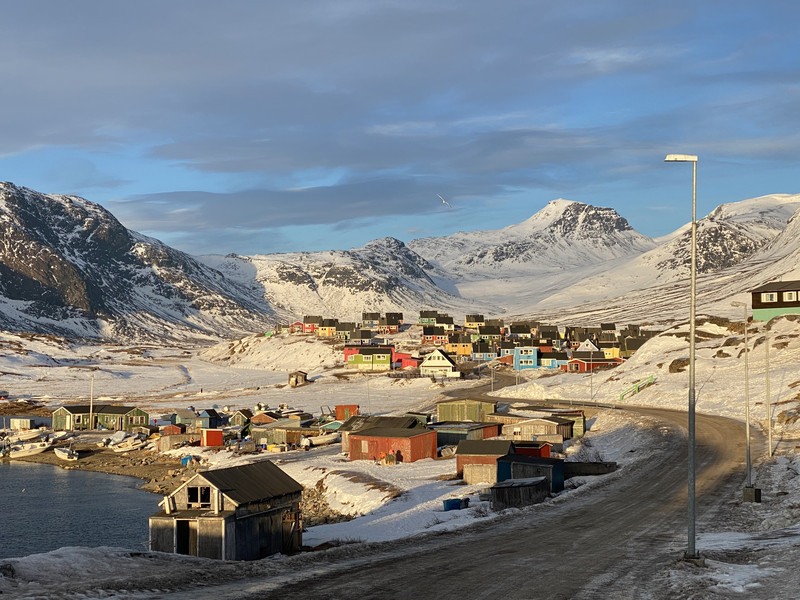By Adam Douty, Accuweather.com

A lava delta formed from the La Palma volcanic eruption in the Canary Islands is seen on September 29. Photo Courtesy Spanish Oceanographic Institue/TWITTER
Oct. 15 -- Eruptions of the Cumbre Vieja volcano on La Palma in the Canary Islands have destroyed large swaths of the region, leaving vast amounts of lava and ash on the ground since the middle of September. In the past month, one species of island residents had been neglected until recently -- the canines.
In the town of Todoque, several malnourished dogs were recently found roaming a walled-in yard that has been covered in ash. Due to the surrounding lava flow, reaching the hungry pups was impossible -- until two local companies stepped in with life-saving drones.
The companies, Ticom Soluciones and Volcanic Life, have used the drones to drop food and water to the dogs since last weekend, and say they will continue to feed the dogs as long as meteorological conditions allow.
On its way to the Atlantic Ocean, the lava flow has destroyed everything in its path but spared a few areas by creating "islands" of land that remain relatively unharmed.

La Palma's councilor of security and emergencies, Nieves Rosa Arroyo, said authorities became aware of the situation of the animals last week and subsequently commissioned the companies to help, according to Newsweek.
In order to fly the drones, visibility must be good enough for the drone pilots to safely drop the packages. High winds could also keep the drones from being able to fly.
AccuWeather meteorologists expect tranquil weather to be in place across the island into at least early next week, so it appears as if the drones will be able to continue delivering food and water to the dogs.

Lava flows from the Cumbre Vieja volcanic eruption on the island of La Palma on the Canary Islands on September 28. Photo by Angel Medina/EPA-EFE
RELATED Experts say La Palma eruption in Canary Islands showing no signs of ending
The volcano first began erupting on Sept. 19 and has not shown any signs of stopping. Thousands of people on the island have been forced to evacuate.
Lava has already covered about 1,680 acres and destroyed more than 1,500 structures, according to Copernicus Emergency Management Service, which provides mapping products based on satellite imagery.
Lava from the eruption has been spilling into the Atlantic Ocean and created nearly 100 acres of new land.
RELATEDSatellite captures rare weather phenomenon after volcano erupts
Earlier this month, the eruption created a phenomenon called gravity wave clouds as it sent a plume of hot gas high into the atmosphere.


Updated: October 15, 2021
MADRID (AP) - The second 4.5 magnitude earthquake in two days rattled the Spanish island of La Palma on Friday, officials said, as scientists described a gushing river of molten rock from an erupting volcano as "a true lava tsunami."
The two quakes were the strongest to hit La Palma, part of the Canary Islands off northwest Africa, since the volcano erupted on Sept. 19, Spain's National Geographical Institute said.
Lava rolling toward the Atlantic Ocean forced the evacuation of more than 300 people late Thursday, bringing the number of people forced from their homes since Tuesday to 1,200, according to the La Palma government. About 7,000 people in all have had to flee since the eruption, the government said.
Authorities have reported no casualties from the eruption on the island of some 85,000 people. Most of the island, where the economy is based mostly on farming and tourism, has been unaffected so far.
Two main rivers of lava were still flowing from the Cumbre Vieja ridge Friday. The initial one has slowed to a virtual stop, but a second one is spewing a large amount of molten rock and compelling authorities to stay alert for further possible evacuations.
The Canary Islands Volcanology Institute likened one of the flows to a lava tsunami as the molten rock poured down a hillside.
The volcano has coughed up ocean sediment that pre-dates the island's formation 2 million years ago, Vicente Soler of Spain's Higher Center for Scientific Research said.
The lava has fully or partially destroyed more than 1,500 buildings, most of them homes, and covered more than 680 hectares (1,680 acres), according to an EU satellite monitoring agency.
Strongest quake since volcano erupted shakes Spanish island

Military Emergency Unit personal clear black ash from volcano as it continues to erupt lava behind a church on the Canary island of La Palma, Spain on Wednesday Oct. 13, 2021. A new lava stream from an erupting volcano threatened to engulf another neighborhood on its way toward the Atlantic Ocean. Island authorities have ordered the evacuation of around 800 people from a section of the coastal town on Tuesday after the lava took a new course and put their homes in its probable path of destruction.
MADRID (AP) — A 4.5-magnitude earthquake shook La Palma in Spain’s Canary Islands in what was the strongest recorded temblor since volcanic eruptions began 26 days ago, authorities said Thursday.
The quake was one of around 60 recorded overnight, Spain’s National Geographic Institute said, as the Cumbre Vieja volcano continued to spew fiery rivers of lava that are destroying everything in their path and dumping molten rock into the Atlantic Ocean.
The lava has partially or completely destroyed more than 1,600 buildings, about half of them houses, officials said, though prompt evacuations have so far prevented any deaths. Around 7,000 people have had to abandon their homes, 300 of them Thursday.
“This is definitely the most serious eruption in Europe of the past 100 years,” Canary Islands President Ángel Víctor Torres said.

Lava from a volcano flows destroying a banana plantation on the Canary island of La Palma, Spain, on Wednesday, Oct. 13, 2021. A new river of lava has belched out from the La Palma volcano, spreading more destruction on the Atlantic Ocean island where molten rock streams have already engulfed over 1,000 buildings. The partial collapse of the volcanic cone has sent a new lava stream heading toward the western shore of the island. (AP Photo/Daniel Roca)
“The only good news is that...so far, nobody has been hurt,” he said.
The flow from three rivers of molten rock broadened to almost 1.8 kilometers (just over a mile), the La Palma government said, but their advance has slowed to a crawl.
Hard, black lava now covers 674 hectares (1,665 acres) on the western side of the island, authorities said, though most of la Palma is unaffected.
Authorities advised locals against traveling by car because volcanic ash was ankle-deep in some places. The volcano’s plume was 2,600 meters (about 8,500 feet) high as of Thursday.
La Palma is part of Spain’s Canary Islands, an Atlantic Ocean archipelago off northwest Africa whose economy depends on tourism and the cultivation of the Canary plantain.





.jpg?ext=.jpg) Terrestrial Energy's illustration of the IMSR400 in the configuration proposed for the Darlington site (Image: Terrestrial Energy)
Terrestrial Energy's illustration of the IMSR400 in the configuration proposed for the Darlington site (Image: Terrestrial Energy)




